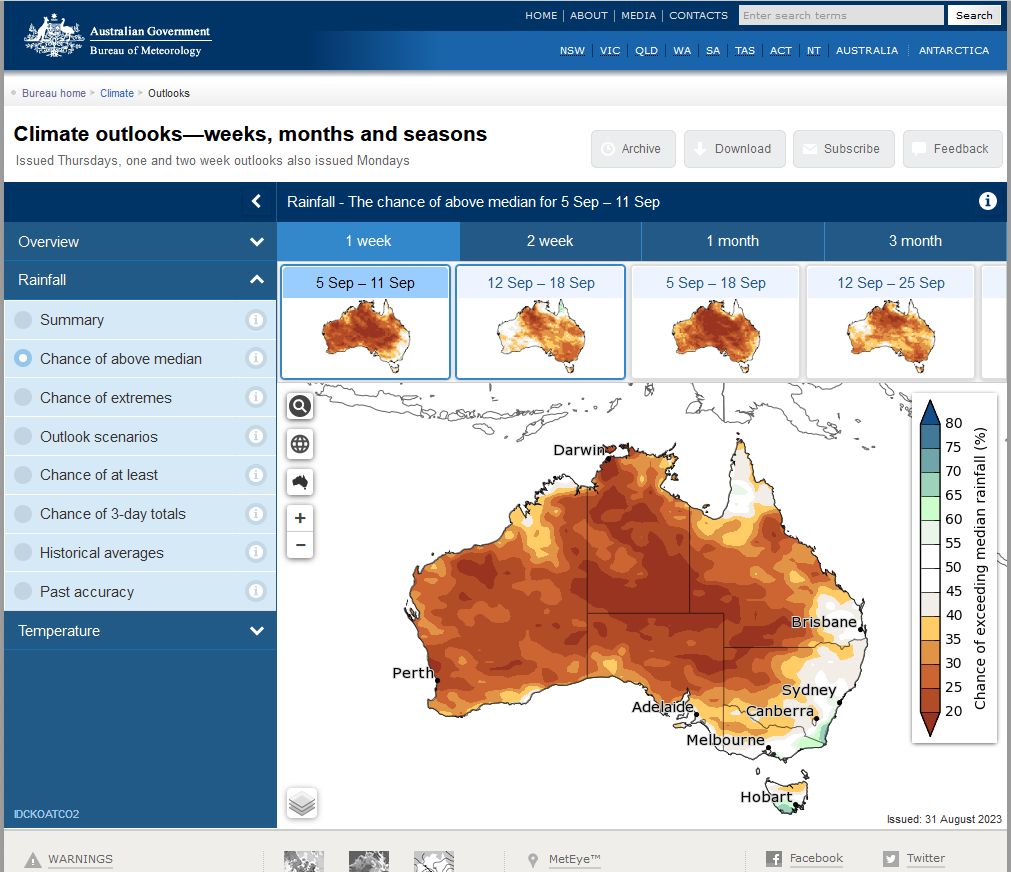
Hi all!
Only 17.5mm for October, giving us a YTD of 463.5mm.
How does this compare to other years?
2023 17.5mm(7) 463.5mm (5)
2022 71.0mm (1) 456.0mm
2021 48.5mm (4) 449.0mm
2020 53.5mm (3) 456.0mm
2019 25.0mm (5) 329.5mm
2018 14.5mm 282.5mm
2017 19.5mm (6) 464.0mm (4)
2016 55.0mm (2) 598.0mm (1)
2015 2.0mm 393.0mm
2014 Nil 345.0mm
2013 9.0mm 469.0mm (3)
2012 14.0mm 476.0mm (2)
2011 13.0mm NA
This October (17.5mm) was less than the average (25.6mm) for the last 13 years. Because of the wet July our YTD is holding up at this stage.
The Indian Ocean Dipol & El Nine are locked in for the next two months at least, possibly into the new year. That means that winds are clockwise in the Indian Ocean & anticlockwise in the Pacific Ocean, taking rain bearing clouds away from Australia. It also means that the chances of Tropical Cyclones is lessened with the first of two possible in January rather than December as usual. That in turn means less chance of a ‘big dump’ this year at least. That in turn means it will start to get drier & hotter than usual, well into summer. The Indian Ocean will probably move into neutral in late January but this will give little relief.
The water storage in South Australia at present is at 74%, so we have good storage heading into the hot conditions. Our soil is warming up, now at around 17 degrees. Tomato planting time is now for a good salad at Xmas. Warmer soil means drier soil in the top half metre, so get the hoses out for the garden. We don’t want to lose our new plants planted last May/June.
For those wondering what the very bright star is in our eastern sky at present, it is Jupiter.
That’s it for now, catch you in the first week of December
Paul





